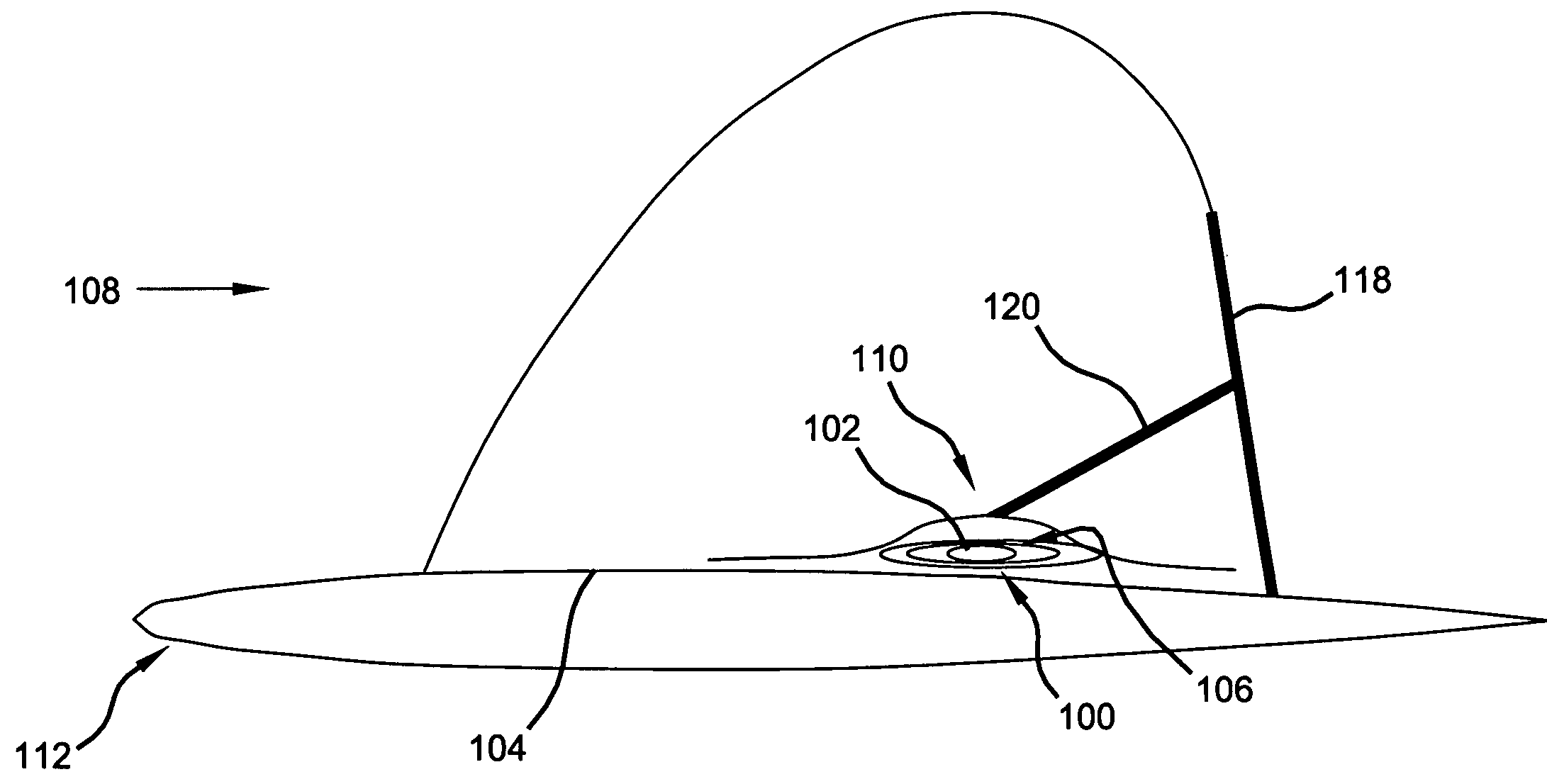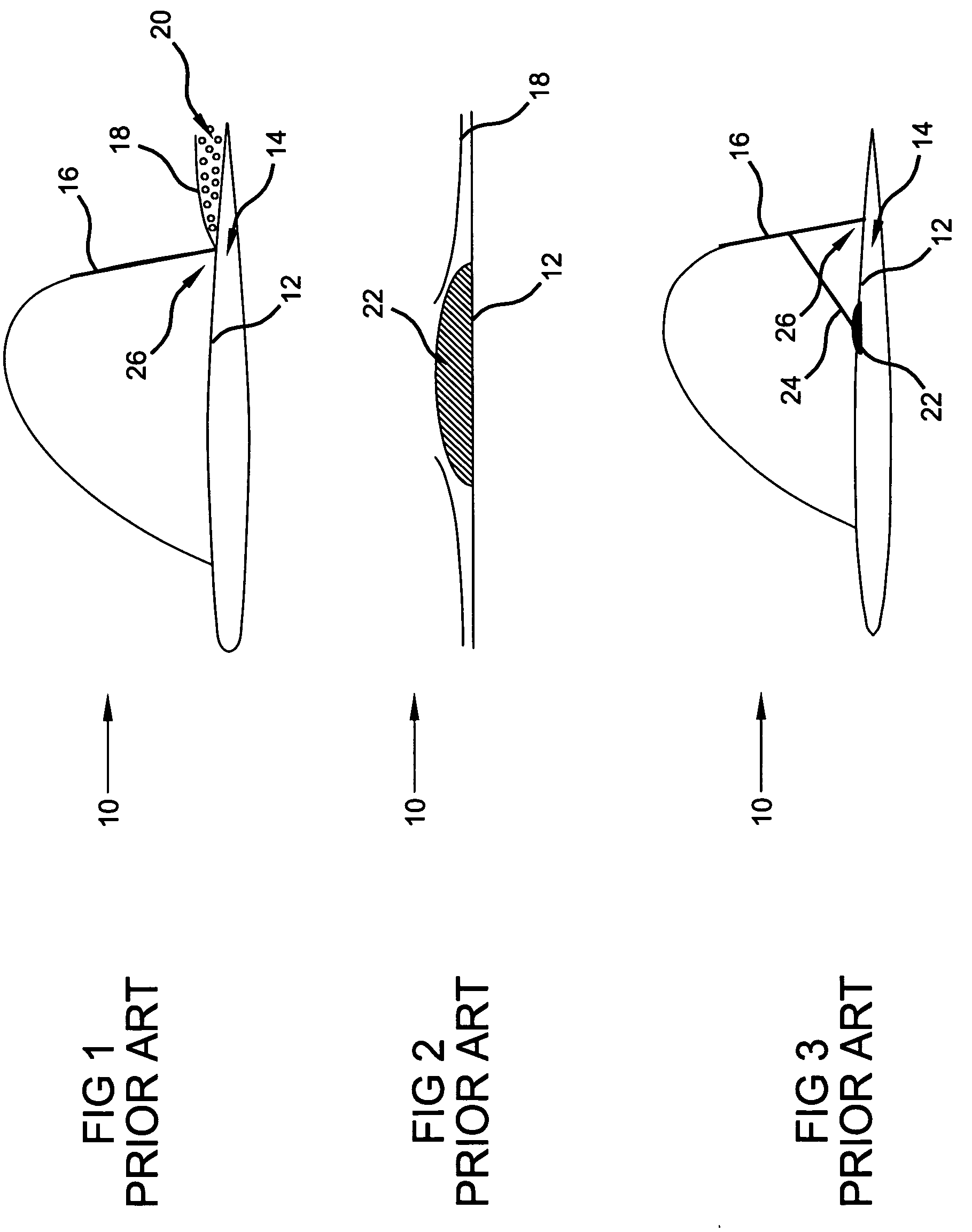Dynamic bumps for drag reduction at transonic-supersonic speeds
a technology of transonic-supersonic speed and bumps, applied in the direction of airflow influencers, influencers by shock waves, fuselages, etc., can solve the problems of reducing the lifting capability of the wing, adversely affecting the aerodynamic performance of the aircraft, etc., and achieve the effect of reducing the overall drag
- Summary
- Abstract
- Description
- Claims
- Application Information
AI Technical Summary
Benefits of technology
Problems solved by technology
Method used
Image
Examples
Embodiment Construction
[0023]The following description is merely exemplary in nature and is not intended to limit the present teachings, their application or uses. It should be understood that throughout the drawings, corresponding reference numerals indicate like or corresponding parts and features.
[0024]Various aspects of the present teachings can be applicable to any of a wide range of high speed, airborne mobile platforms, but is particularly useful with jet powered aircraft (e.g., but not limited to, fighter jets, commercial jets, private jets, supersonic dash aircraft, among others). The present teachings are also applicable to both unmanned and manned aircraft, e.g., directly, remotely, via automation, one or more combinations thereof, among others. In addition, various aspects of the present teachings can be applicable to any of a wide range of lift-producing or thrust-producing surfaces for aircraft (e.g., but not limited to, fixed wings, variable geometry wings, rotary wings, right semi-span win...
PUM
 Login to View More
Login to View More Abstract
Description
Claims
Application Information
 Login to View More
Login to View More - R&D
- Intellectual Property
- Life Sciences
- Materials
- Tech Scout
- Unparalleled Data Quality
- Higher Quality Content
- 60% Fewer Hallucinations
Browse by: Latest US Patents, China's latest patents, Technical Efficacy Thesaurus, Application Domain, Technology Topic, Popular Technical Reports.
© 2025 PatSnap. All rights reserved.Legal|Privacy policy|Modern Slavery Act Transparency Statement|Sitemap|About US| Contact US: help@patsnap.com



